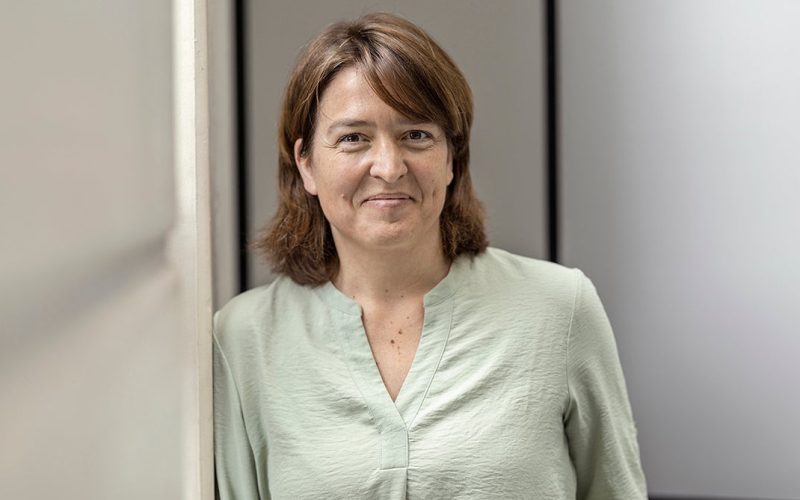Prof. Saskia van Mil has been studying metabolic diseases for over 20 years. She mostly focuses on the role of bile salts (specific substances in the bile) that play an important role in the metabolism of nutrients. Saskia held her inaugural lecture on Friday 8 July.
Over a quarter of the global population suffers from fatty liver disease. This mainly affects people with a Western lifestyle and with obesity. This condition develops when the body receives more food than needed for an extended period of time. The excess sugars and fats from food accumulate in the liver.
Most people with fatty liver disease do not experience any symptoms and do not even know that they have this condition. It can take years before they develop any symptoms. This usually happens when the liver becomes inflamed because of the fatty deposits. This can result in the formation of scar tissue in the liver, and this in turn increases the risk of a person developing more serious diseases, such as liver cirrhosis and liver cancer.
Prof. Saskia van Mil has been studying metabolic diseases for over 20 years. “Metabolism is the process of converting nutrients into energy in the body, so that the body can grow, function and move,” she explains. “The liver plays a very important role in the metabolism. This organ acts like a distribution centre, ensuring that all the nutrients absorbed from the intestines are distributed throughout the body.”
Saskia has been an associate professor of Molecular and Translational Metabolism since 2019. Her research group studies the metabolism of the human body, and she is working on new treatments for diseases such as fatty liver disease.
Saskia’s research focuses primarily on the role of bile salts. “The body can produce energy from 3 different nutrients in the diet: carbohydrates, protein and fats. The intestines are able to absorb carbohydrates and proteins on their own. However, for fats, they need some assistance in the form of bile salts. Bile salts are a component of bile, and they act in a manner similar to soap. They can dissolve fats in water and ensure that the intestines are also able to absorb the fats from our diet. It is important to have the correct quantity of bile salts present, not too little and definitely also not too much,” she explains.
“As is often the case in science, it all turns out to be much more complicated than we initially thought”
As it turns out, bile salts also have another important function: they bind to a receptor called FXR. Saskia: “FXR acts like a manager in the cell. It instructs enzymes and pump proteins to bring the nutrients to the correct place in the cell and convert them to energy. FXR is very sensitive to the concentration of bile salts. The bile salts not only act like a soap, but they also act as signal molecules for the manager FXR.”
The collaboration between bile salts and FXR occurs mainly in the intestines and in the liver. “We are studying the role of bile salts and FXR in fatty liver disease,” explains Saskia. “Perhaps FXR does not function properly in people who develop this disease or perhaps these people do not produce enough bile salts. In a clinical trial, patients with fatty liver disease will be given a medicine that mimics the effect of bile salts and it is hoped that this will make the liver healthier again.”
“But as is often the case in science, it all turns out to be much more complicated than we initially thought,” she says with a smile. “It turns out that FXR is not just 1 manager, but in fact 4 different managers! We know that 2 of these 4 managers can control a much larger range of enzymes and pump proteins. And guess what: it turns out that these 2 “super-managers” are severely underrepresented in people with a fatty liver. We do not know why yet, but of course we are looking into this. What we do know is that these 2 super-managers are present in higher concentrations in people who exercise more and fast regularly. So I imagine that the popular diet trend called intermittent fasting, in which you don’t consume any food for up to 16 hours a day and which claims to result in weight loss and slow down the development of diabetes, has something to do with this FXR manager!”
Saskia has accepted another challenge in addition to her efforts as a scientist and a group leader of an enthusiastic group of scientists. Last year she was appointed head of department for the Center for Molecular Medicine (CMM). This centre employs nearly 200 scientists in 18 research groups, all looking to expand our knowledge about the human body at the molecular level and what changes take place in the body when faced with conditions such as cancer and metabolic diseases.
Saskia is a staunch advocate of fundamental research. “I feel that it is important for investigators to function as autonomously as possible, in an environment that stimulates creativity and the elaboration of innovative research ideas. Long-term investments are vital in this regard. It usually takes decades before a new finding becomes clinically available.”
Picture in header by Ed van Rijswijk
